 EN
EN
 PT
PT
Simplified didactic units from chemical substances to the human body
Product: Book
Trim size in cm: 21x29,7cm
Pages: 248
ISBN: 9788859026631
Publication date: 01/11/2021
Suitable for: Lower secondary 1st level (ages 10-11), Lower secondary 2nd level (ages 12-13)
REQUEST A SAMPLE OR MORE INFORMATION
This volume presents the science topics from the second year of lower secondary school, starting from animal behavior up to the study of the human body, in both synthetic (complete) and essential (simplified) ways, with anticipatory maps and complete maps, concepts key, glossaries, explanatory illustrations, multi-level checks, and summary quizzes. It also proposes some activities for cooperative groups, which can be recorded on the three attached posters, and online resources with further educational proposals.
Module 1: Ethology
Ch. 1 - Animal behaviour
Review quiz
Module 2: Chemistry and physics
Ch. 2 - Chemical substances
Ch. 3 - Chemical transformations and carbon compounds
Ch. 4 - Forces and balance
Ch. 5 - Forces and movement
Ch. 6 - Sound
Ch. 7 - Light
Review quiz
Module 3: The human body
Ch. 8 - Respiration
Ch. 9 - Blood circulation
Ch. 10 - Nutrition and the digestive system
Ch. 11 - The excretory system and the skin
Ch. 12 - The musculoskeletal system
Review quiz
Appendix - Cooperative science workshops

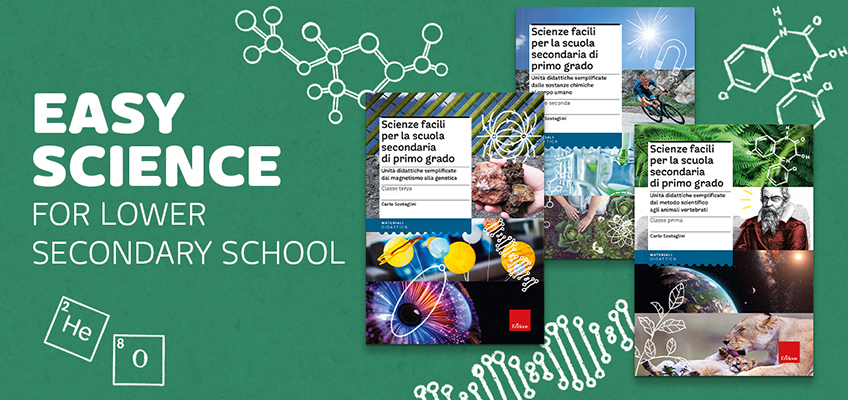
The activities contained in this new series, carefully and smartly graded according to difficulty levels are based on a grounded approach, which starts from the classroom experience. They provide tools and strategies that are really useful to lower secondary school teachers because they merge the teacher's practical knowledge, with the expert knowledge of those who do research in the educational-didactic field and the experiential-relational knowledge of the pupils.
The series Easy Science for Lower Secondary school is a useful tool for the whole class, and it is ideal for students with learning difficulties. In each chapter, multiple facilitation tools are offered (simplified and summarized texts, introductory and summery maps, key concepts, texts, glossaries, ideas for research and workshop activities), referred to different levels of competences, in order to provide each pupil, even those with special educational needs or disabilities, many opportunities to learn in a meaningful way while finding a point of contact with the activity carried out by the class.
Year one
Simplified didactic methods: from the scientific method to vertebrate animals More info »
The volume counts 14 chapters divided into three modules:
Year two
Simplified didactic units from chemical to human body More info »
This volume counts 12 chapters divided into three modules:
Year three
Simplified didactic units from magnetism to genetics More info »
This volume presents the science topics for the third year of lower secondary school, divided into three modules:
It also proposes activities and experiments for cooperative groups.
In each chapter, multiple facilitation tools are offered (simplified and summarized texts, introductory and summery maps, key concepts, texts, glossaries, ideas for research and workshop activities), referred to different levels of competences, in order to provide each pupil, even those with special educational needs or disabilities, many opportunities to learn in a meaningful way while finding a point of contact with the activity carried out by the class:
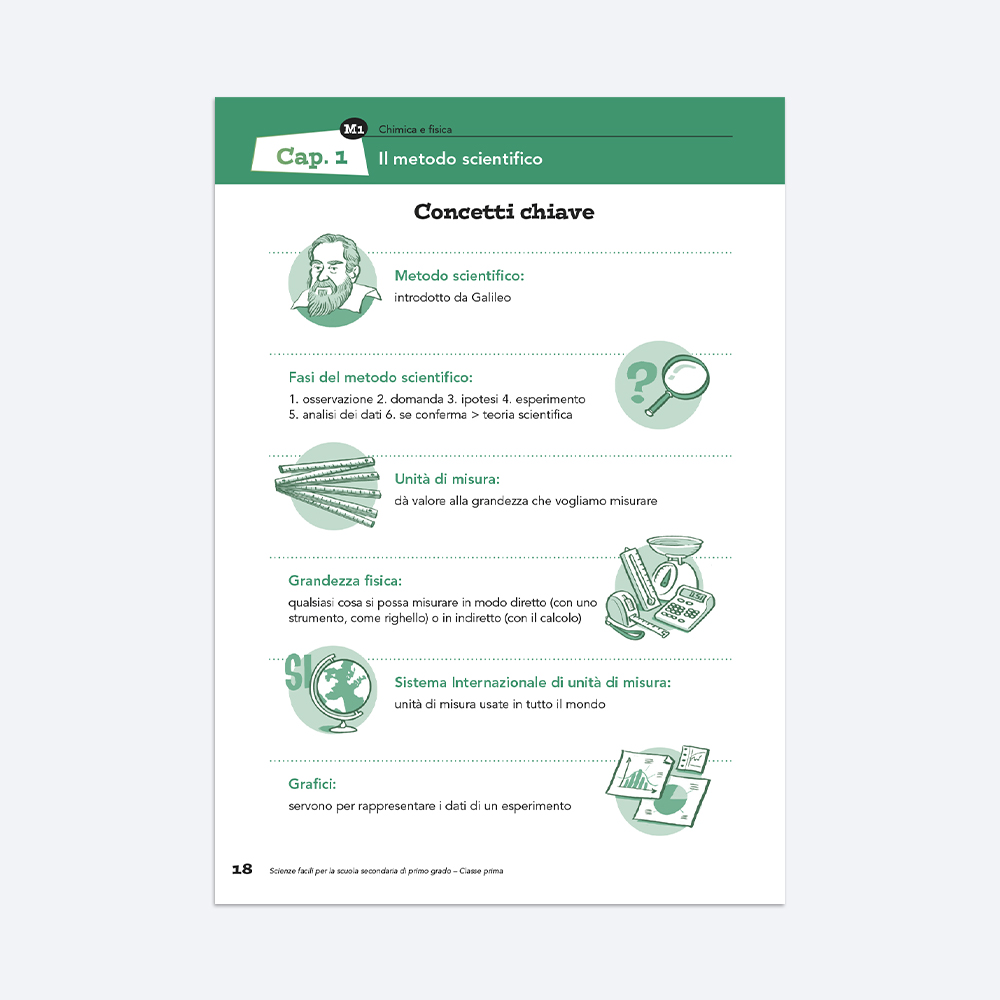
Illustrated key concepts The fundamental concepts to understand
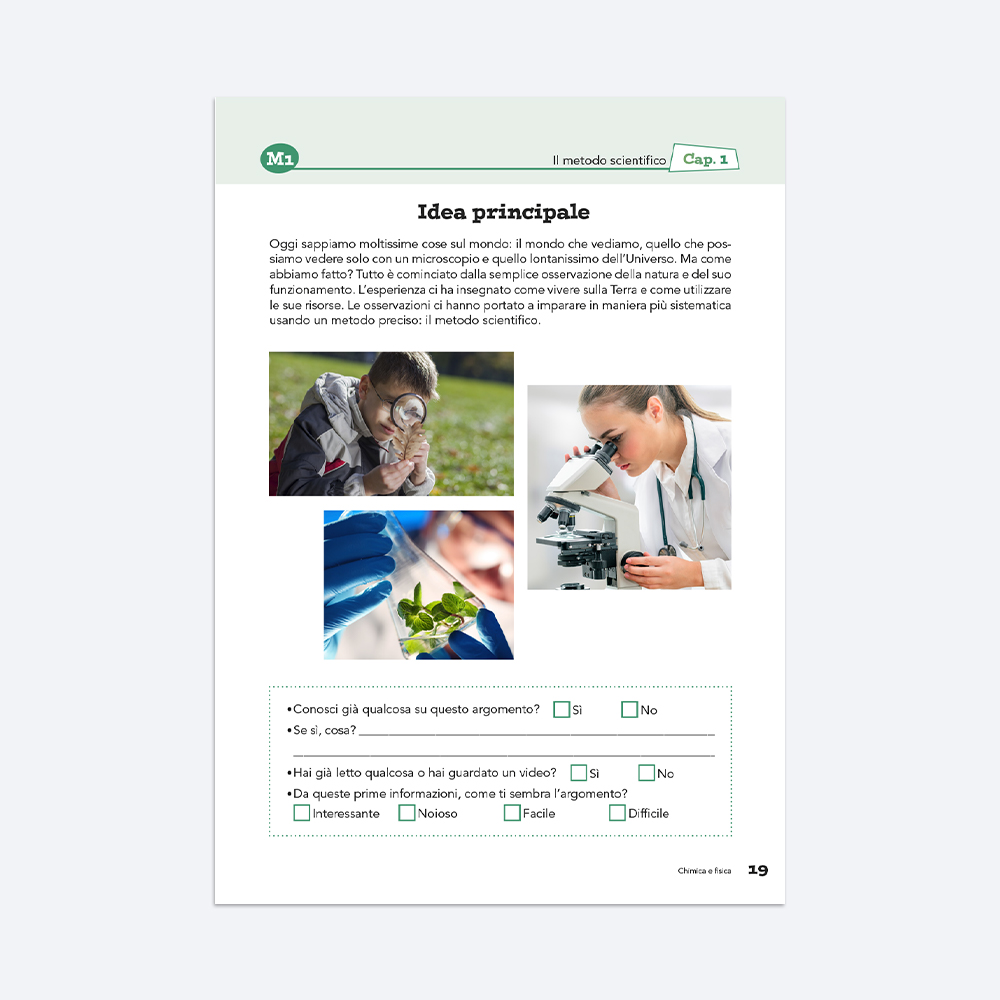
Main Idea A brief contents summary, with a few introductory questions
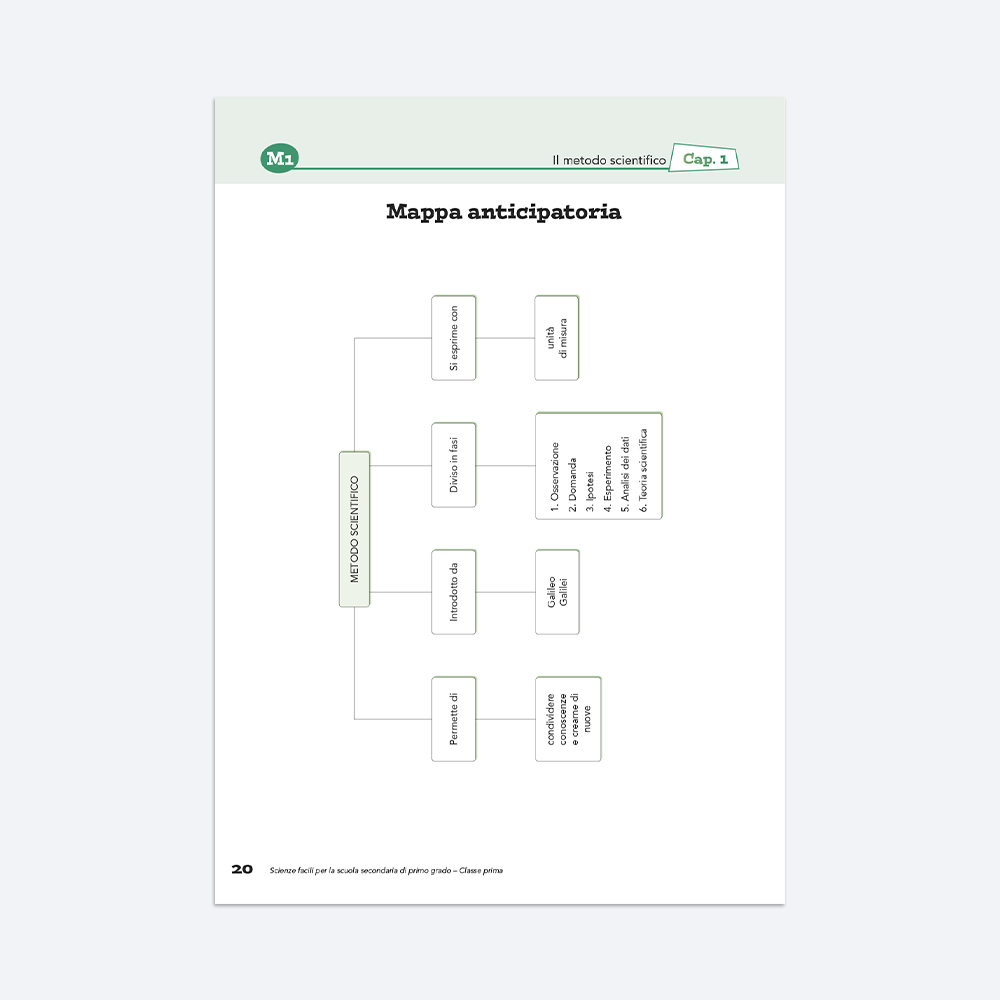
Introductory Maps Facilitate the logical connections between the most important information in the chapter
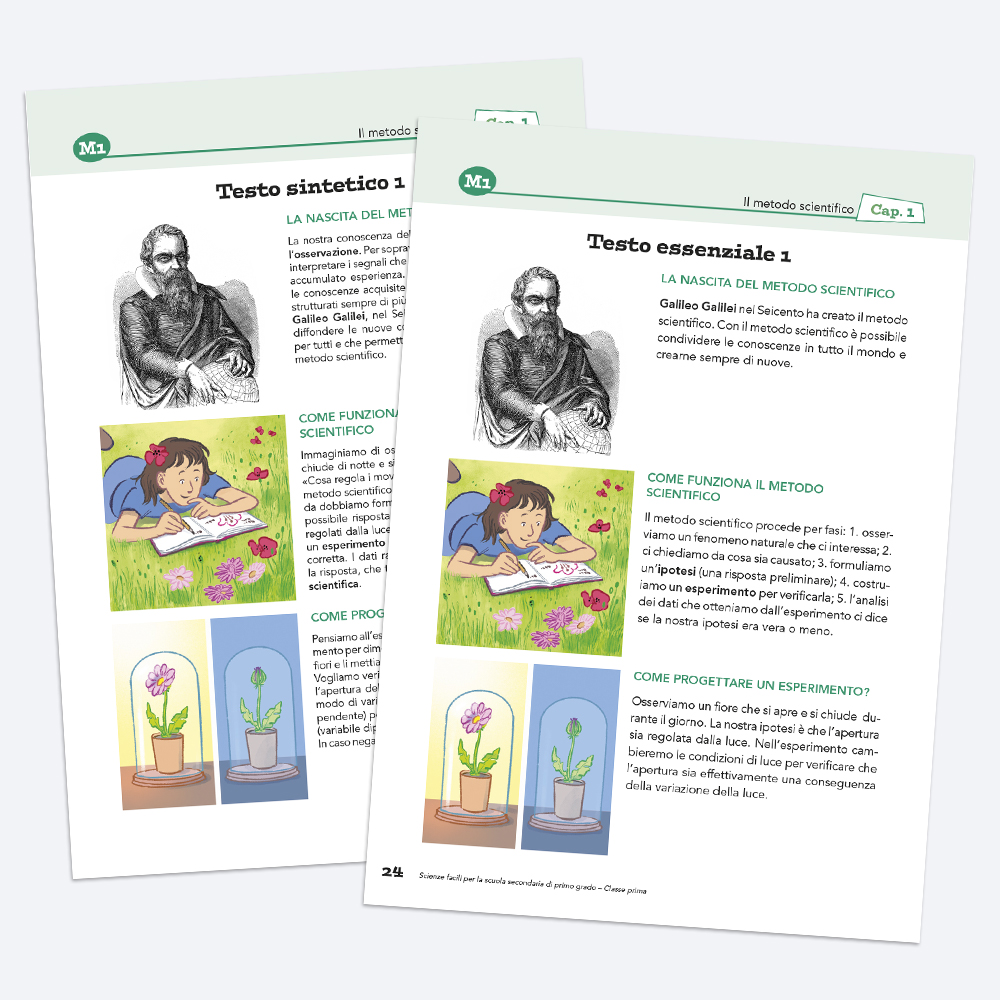
Simplified and Essential Text The complete information is given as a starting point (simplified text), and then summarized in a few lines with accessible language (essential text)
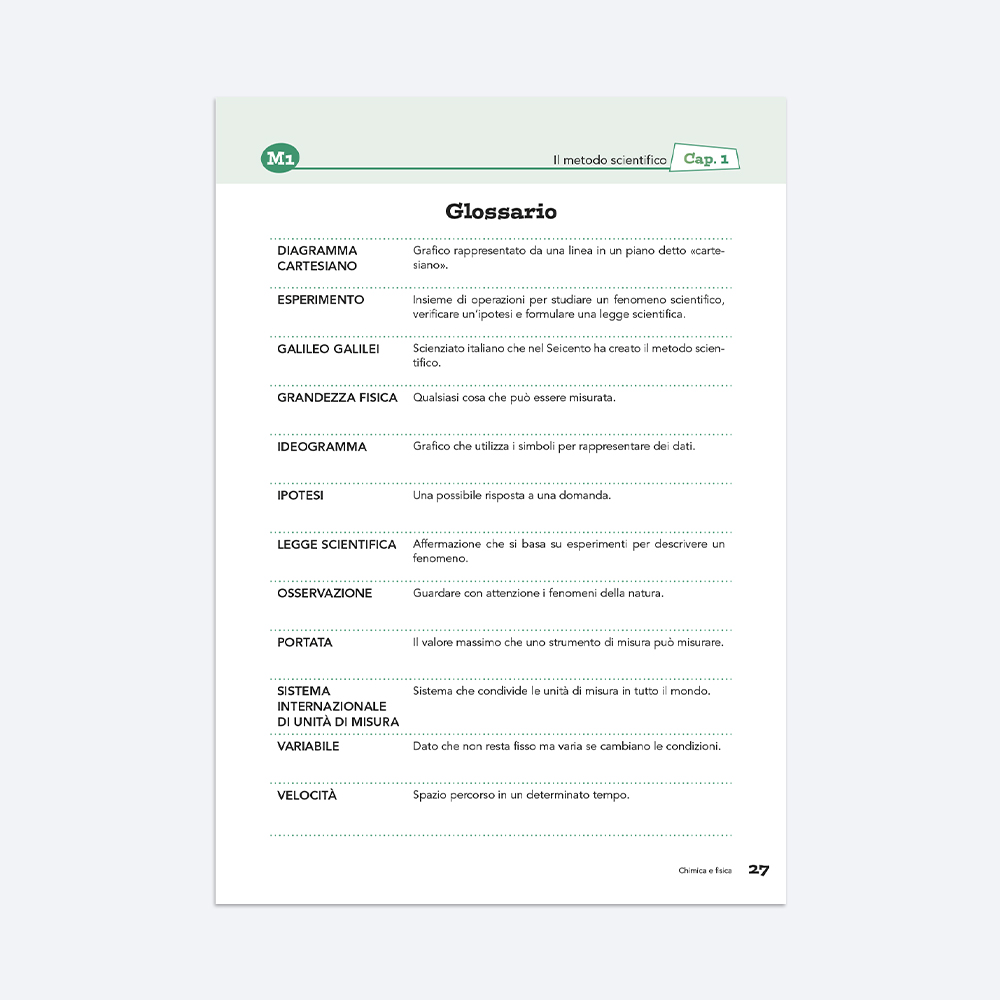
Glossary After being highlighted in bold in the texts, the fundamental terms are explained in a simpler and clearer language
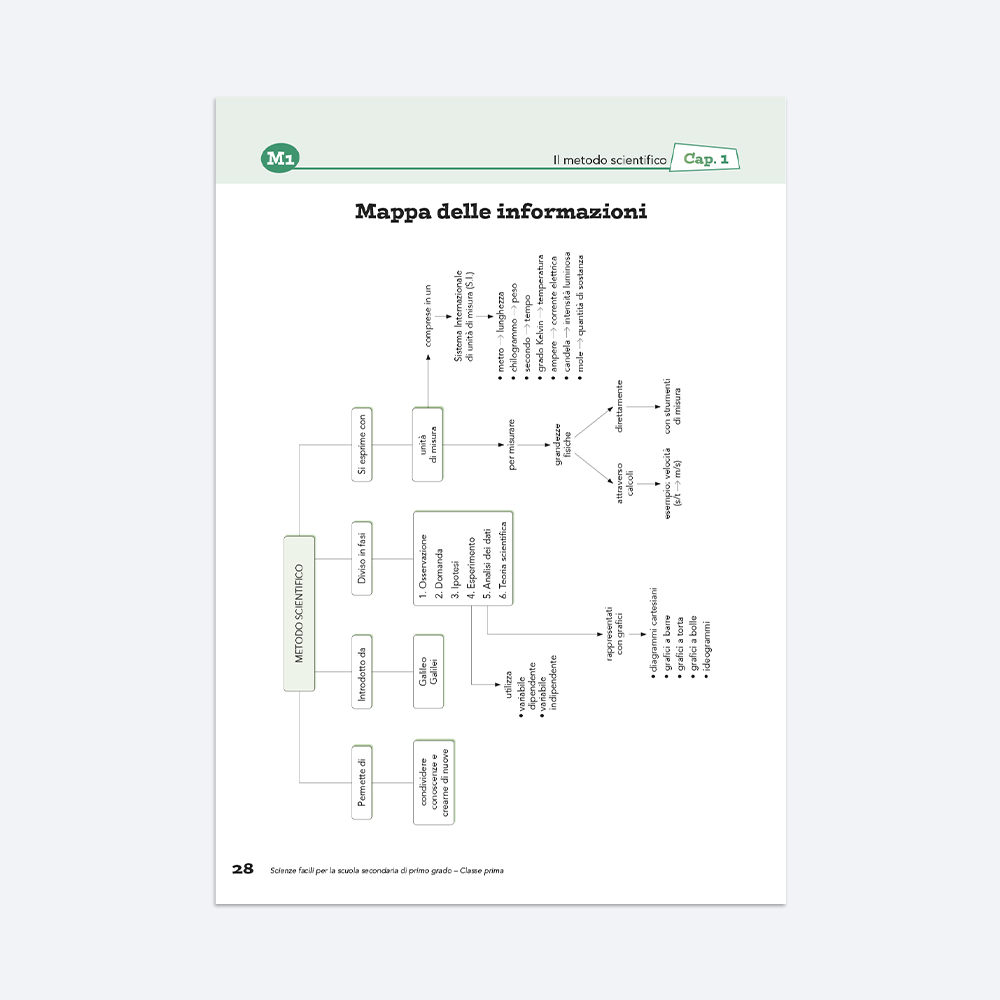
Information Maps They present the key concepts of each chapter and the relationships between them, providing a concise and easy to read visual picture
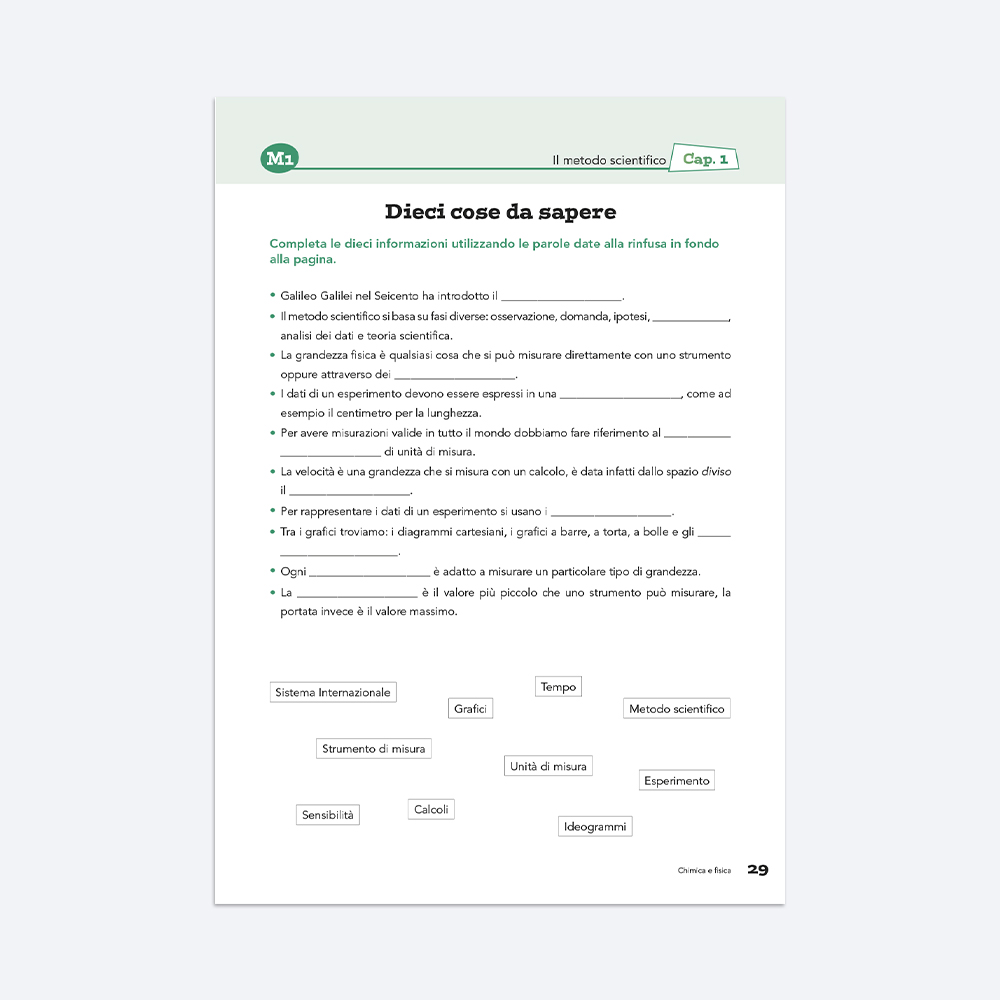
10 things to know The ten most important pieces of information are ordered in sequence, with blank spaces for the student to complete the missing information
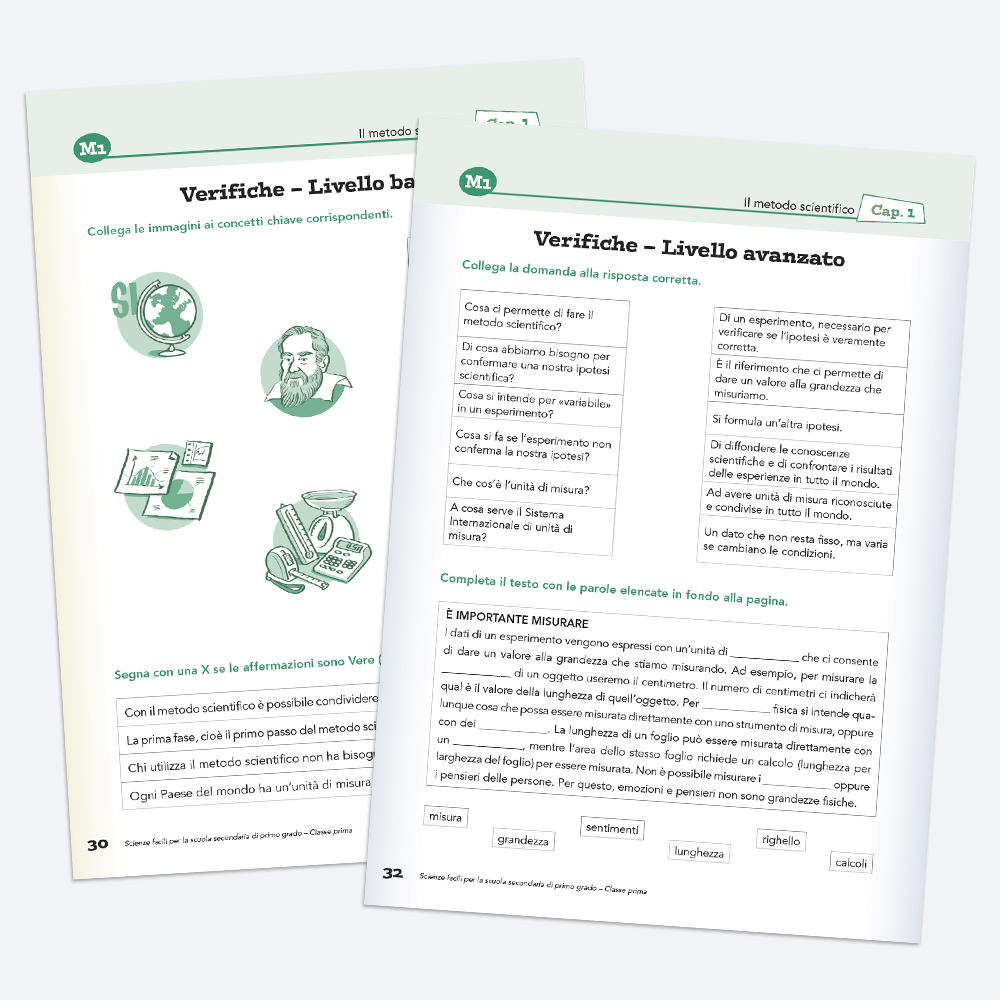
Basic and advanced level tests Placed at the end of each chapter, they are divided into two levels so that the degree of difficulty is adequate for all students
MY RESEARCH - Each chapter ends with the proposal to further investigate, individually or in a group, a topic chosen by the pupils among those suggested, and then present it to the rest of the class.
QUIZ - At the end of each module, a multiple choice quiz is presented with 8 questions regarding the main topics of the chapters.
WORKSHOPS – at the end of the volume, for each of the three modules, there is a whole class experiment and five different experiments to be carried out.
THE AUTHOR
Carlo Scataglini is a specialised teacher and trainer in remediation and support. With Erickson he has published a number of books and CD-ROMs for remediation and support, amongst which the series Easy reading and the books Easy History, Easy geography, Easy Science and Easy Information Technology. He is also the author of various children’s stories.